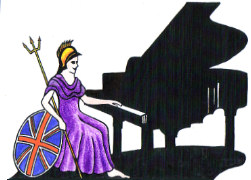Teachers, Accompanists and Piano Entertainers in the UK

UK Piano Page

Grove House
Wade House Road. Shelf
Halifax, West Yorkshire HX3 7PF
England
GSG Pianos is one of the North of England’s
Galways Mill
Leeds, West Yorkshire
England
Specialist piano dealer and wholesaler. Hundreds
170 Easterly Road
Oakwood
Leeds, West Yorkshire LS83AD
England
Suppliers of new and reconditioned acoustic pianos
Victoria Works
Benjamin Street
Wakefield, West Yorkshire WF29AR
England
We deal in a wide variety of Pianos traditional &
Madbrook Farm
Warminster Road
Westbury, Wiltshire BA133RB
England
OVER 100 PIANOS IN STOCK ! Sales at our stores in
Music Festival for performers and guests Our 10th
18-06-2022 01:30PM
The Morecambe Bay Piano Group was set up to extend
11-12-2021 02:00PM
The Morecambe Bay Piano Group was set up to extend
08-01-2022 02:00PM
The Morecambe Bay Piano Group was set up to extend
12-02-2022 02:00PM
Polyester and Pianos.
Polyester began as a group of polymers in W.H. Carothers' laboratory. Carothers was working for DuPont at the time when he discovered that alcohols and carboxyl acids could be successfully combined to form fibres.
Polyester as a polish is a three-component paint that utilizes the resin, catalyst and accelerant. Thanks to its tight molecular structure, polyester has a solid content which gives the product superior mechanical and chemical resistance to scratches
The application of Polyester finishes requires specialized equipment and machinery to produce a quality product. Polyester is specified when high scratch resistance and 100% sheen are needed.
Cleaning Polyester on Pianos
For everyday cleaning, wipe your piano with a clean, damp (not wet) cloth, followed by a clean dry cloth. If more stubborn soils do get on the finish, you may try dipping your cloth in a mild soap and water solution before wiping, and then follow that with a cloth dampened in clear water, and then the dry cloth.